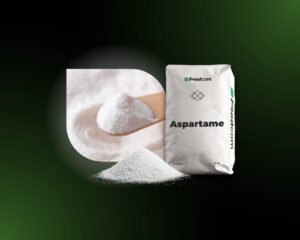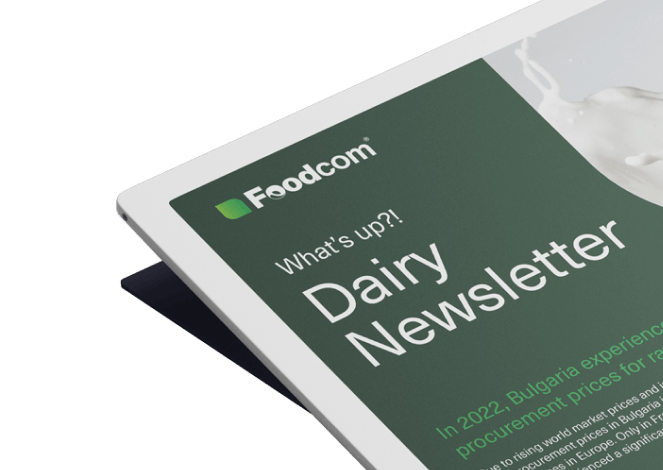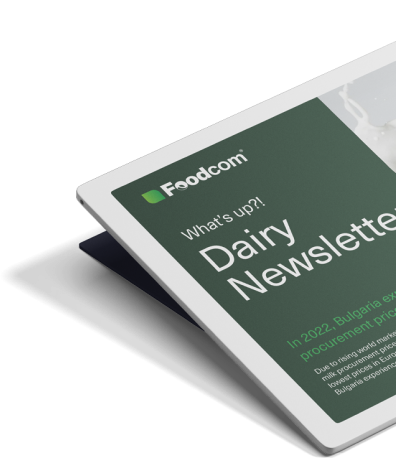- Artificial sweeteners are substances that give products or foods a sweet taste with minimal or zero calories.
- There are many types of sweeteners, including aspartame, sucralose (E955) and acesulfame K, each with different properties and uses.
- Sweeteners are used in beverages, diet products, supplements and pharmaceuticals.
- The production and distribution of sweeteners is a response to the growing market demand for sugar alternatives.
Growing consumer awareness of health and the impact of diet on the body means that traditional sugar is increasingly being replaced by alternatives. Artificial sweeteners – intense sweeteners with low or no calorific value – now play a key role in the food, pharmaceutical and cosmetics industries. We explain what artificial sweeteners are, their types and uses.
What are artificial sweeteners?
Artificial sweeteners are chemical compounds developed to impart intense sweetness to products without providing high energy value, as is the case with sucrose. Unlike sugar, their sweetening power can be tens to even hundreds of times greater, allowing them to be used in minimal quantities.
Artificial sweeteners are characterised by a low or zero glycaemic index and a lack of fermentation in the mouth, which reduces the risk of tooth decay. They make it easier not only to protect teeth, but also to reduce dietary calories and control glycaemia, especially in people with diabetes or struggling with obesity and overweight.
Synthetic sweeteners are sustainable when used as an ingredient in finished products. They must also comply with food safety regulations. However, their consumption in excess can cause intestinal discomfort.
Types of artificial sweeteners
Artificial sweeteners comprise a large group of different substances that may have different properties and uses. Below, we will outline some of the most commonly used products with a brief description of their characteristics.
Aspartame
What is aspartame? Otherwise known as E951, it is one of the most popular sweeteners. It is approximately 200 times sweeter than sugar, while being low in calories. it blends in well with other sweeteners. It is most commonly used in light drinks, yoghurts and chewing gum, but is not suitable for baking due to its breakdown at high temperatures.
Sucralose
Sucralose (E955) is up to 600 times sweeter than sucrose. It is distinguished by its exceptional heat stability and resistance to acids, making it ideal for use in baked goods and finished products. Sucralose’s properties include its lack of calories and long shelf life, and it can be widely used in drinks, desserts or supplements.
Acesulfame K
Acesulfame K (E950) is a sweetener that is 200 times sweeter than sugar, heat stable and resistant to storage conditions. It is often used in mixtures with aspartame and sucralose to achieve a better flavour profile.
Other sweeteners
Sweeteners such as:
- saccharin (E954) – one of the oldest sweeteners, intensely sweet but with a characteristic aftertaste;
- cyclamates (E952) – widely used in soft drinks and fruit preparations;
- neotame (E961) – new generation sweetener, about 200 times sweeter than sugar; stable at high temperatures, suitable for a wide range of foods.
Artificial sweeteners vs. other substances
Not only artificial sweeteners, but also natural sweeteners such as stevia, xylitol or erythritol are increasingly being used and are sometimes combined with synthetic ones to create hybrid solutions.
It is also worth mentioning a compound such as glycerine, a sugar alcohol that has a delicately sweet aftertaste. The use of glycerine mainly includes its use as a technological additive. It acts as: a stabiliser, emulsifier, solvent, moisture retaining humectant and carrier of flavours and active substances in the product.
Use of artificial sweeteners
Sweeteners are mainly used in the food industry, where they are key in production:
- ‘zero’ and ‘light’ drinks,
- dairy and fruit desserts,
- products for diabetics,
- functional products (e.g. for athletes, proteins),
- dietary supplements and nutritional supplements,
- bakery products (e.g. cakes, creams),
- chewing gum.
Artificial sweeteners are also used in pharmaceuticals and cosmetics. They are found in syrups and effervescent tablets, where their purpose is to mask the bitter aftertaste of medicines, as well as in toothpastes and mouthwashes.
Trends and market for artificial sweeteners
There is currently a rapid increase in demand for low-calorie and sugar-free products. With the introduction of a sugar tax in many countries, this is contributing to the growth of the market for alternative sweeteners. Consumers are also increasingly showing an interest in natural substances with this effect. For this reason, manufacturers often combine synthetic and natural sweeteners to improve the flavour profile and healthiness of the product, while still providing adequate sweetness.
The production of sweeteners is mainly carried out in specialised chemical plants and the whole process is subject to strict quality and safety standards. The marketing of these substances (wholesale) is the domain of companies specialised in the distribution of chemical and food raw materials. As an international supplier, Foodcom offers sweeteners in wholesale quantities, ensuring stability of supply, high product quality and compliance with EU and FDA regulations.
Artificial sweeteners are a key alternative to traditional sugar, reducing calories and improving the dietary value of products. Aspartame, sucralose and acesulfame K are the most commonly used substances, the production and wholesale trade of which is expanding with increasing market demand. Companies such as Foodcom enable the efficient supply of food and pharmaceutical manufacturers, responding to the needs of both industry and informed consumers.








